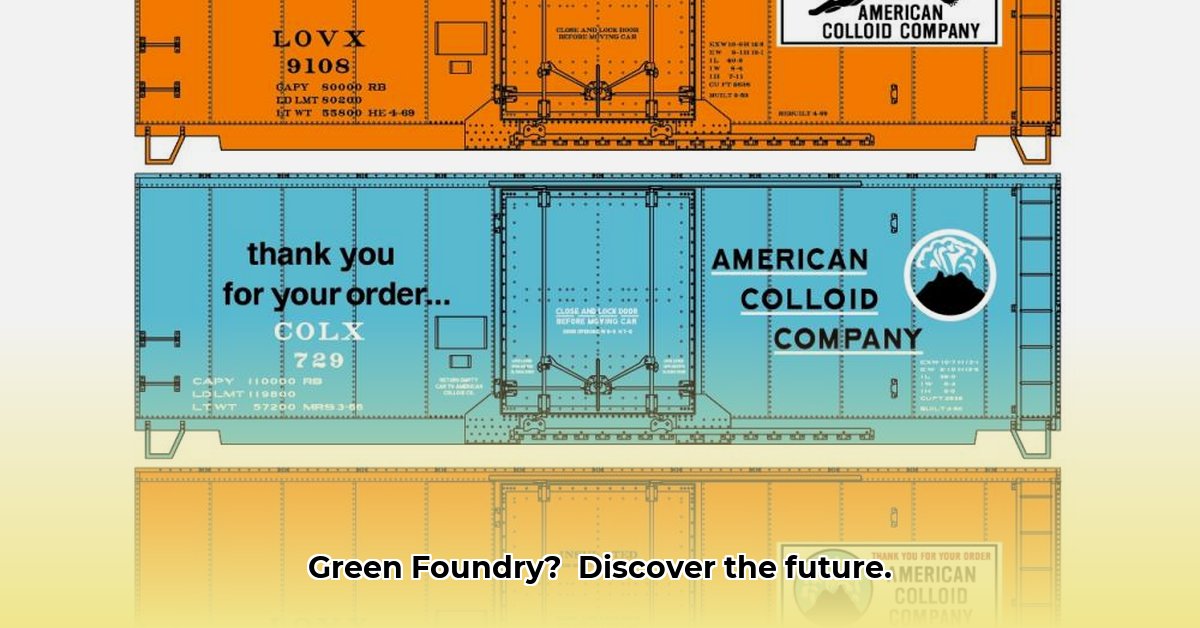
American Colloid Company: Building a Greener Future for Foundries
American Colloid Company (ACC), a subsidiary of Minerals Technologies Inc. (MTI), is a prominent player in the foundry industry, spearheading the transition towards more environmentally responsible practices. Their primary focus is on green sand bonding materials, offering a sustainable alternative to traditional methods. But what constitutes "green" in this context, and how does it affect MTI's overall performance? The traditional foundry process has a significant environmental footprint; ACC's approach offers a more sustainable alternative, but challenges and areas for growth remain. How effective are these efforts, and what role do emerging technologies play?
How much does ACC’s green initiative impact MTI's bottom line? While MTI's stock performance may reflect some level of investor confidence in their sustainability initiatives, isolating the impact of ACC's green technologies requires further financial analysis. Is this solely due to ACC's eco-friendly approach, or are other factors at play?
Scrutinizing ACC's Environmental Claims: A Transparent Look
While ACC emphasizes its leadership in green sand technology, a more transparent presentation of quantifiable data is needed. Specifically, detailed, independently verified lifecycle assessments (LCAs) are crucial for assessing the true environmental benefits. These LCAs should encompass every stage of the material's lifecycle, from raw material extraction (bentonite, chromite, etc.) through processing, transportation, and disposal, to accurately determine the overall environmental footprint. Without comprehensive data on carbon emissions, waste reduction, and overall resource consumption, the effectiveness of ACC's sustainability claims remains difficult to fully evaluate. What verifiable metrics demonstrate the success of ACC's efforts?
Is it enough to simply reduce the environmental burden of chromite sand? Or should this be a multifaceted approach encompassing all foundry operations?
Beyond Green Sand: The Bigger Picture for MTI and the Foundry Industry
Beyond ACC's current products, the foundry industry is experiencing a transformation driven by technological advancements. New binders, innovative recycling methods, and improved casting processes present both opportunities and challenges for ACC and the broader industry. How can ACC stay ahead of the curve in this dynamic environment? What strategic alliances and R&D investments are necessary to maintain a competitive edge while simultaneously advancing sustainable practices?
What are the key financial metrics that should be monitored to assess the effectiveness of sustainable practices in the foundry industry?
A Roadmap to a Greener Foundry Industry: Actionable Steps
Achieving a truly sustainable foundry industry requires a concerted effort from all stakeholders. This involves not only analysis but also proactive steps towards a greener future.
Actionable Steps for Success:
- Increased Transparency: ACC should publicly release detailed, independent lifecycle assessments (LCAs) of all products within the next year to enhance transparency and build trust.
- Innovation in R&D: Invest heavily in research and development to create even more environmentally friendly binders and processes.
- Closed-Loop Systems: Implement closed-loop recycling systems for their materials within the next 3-5 years to minimize waste and maximize resource utilization.
- Responsible Sourcing: Establish strong partnerships to guarantee the consistent supply of responsibly sourced raw materials.
- Sustainability Reporting: MTI should enhance their annual reports to include detailed sustainability performance metrics to improve transparency and accountability. This should include specific, measurable targets for greenhouse gas emission reduction.
- Foundry Customer Engagement: Foundries should consider the full cost of using different bonding materials, which includes both direct costs and environmental impact, promoting informed decision-making.
- Collaborative Action: Foundries should actively adopt sustainable practices and collaborate with suppliers like ACC on innovative solutions.
- Regulatory Support: Enhanced environmental regulations focusing on foundry emissions and waste are needed to create a level playing field and drive adoption of cleaner practices. Government incentives should support the transition to sustainable foundry technologies and materials.
Navigating the Challenges: Risks and Regulatory Hurdles
The foundry industry operates within a framework of constantly evolving environmental regulations. Maintaining a competitive edge requires agility, adaptation, and compliance. ACC and MTI must engage with regulatory bodies to help shape future rules and establish industry best practices.
Key Challenges and Mitigation Strategies:
| Technology/Material | Risk Category | Likelihood | Impact | Mitigation Strategy |
|---|---|---|---|---|
| Green Sand Bonding Materials | Supply Chain Issues | Medium | Medium | Diversify suppliers; secure long-term supply agreements. |
| Chromite Sands | Stricter Regulations | High | High | Invest in alternatives; rigorously comply with regulations. |
| Lack of Transparency/Data | Reputation Problems | High | Medium | Publish clear, detailed sustainability reports. |
The transition to a sustainable foundry industry relies on open communication, innovative solutions, and collaborative efforts between ACC, MTI, foundry customers, and regulatory bodies. The journey of American Colloid Company exemplifies ongoing transformation within the sector, with its future success largely dependent on continued progress. Ultimately, how can the industry work collaboratively to not only reduce the environmental impact but also ensure the long-term viability and economic success of sustainable practices?